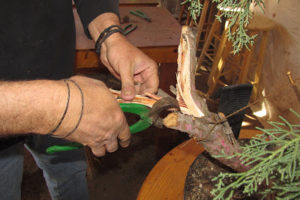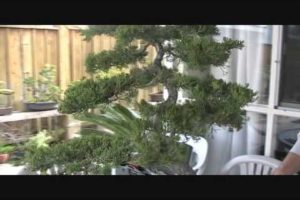YouTube
My First Itoigawa Juniper Bonsai Tree
Juniper (Juniperus spp.) is a popular choice for bonsai due to its hardy nature and attractive appearance. These coniferous trees are native to a variety of environments, from cold, high-elevation forests to warm, dry desert areas. With proper care, juniper bonsai can thrive for many years, bringing a touch of nature and beauty to any space. Here are some tips for growing and caring for juniper bonsai:
- Choose the right location. Juniper bonsai prefer full sun to partial shade and can tolerate a range of temperatures, making them well-suited for outdoor cultivation. However, they should be protected from extreme cold and freezing temperatures, as well as strong winds and heavy rainfall.
- Use the right soil. Juniper bonsai need a well-draining soil mix that is high in organic matter. A mix of equal parts Akadama, pumice, and peat moss works well for these trees. Be sure to water the soil thoroughly before planting your bonsai to help it settle in its new pot.
- Water regularly. Junipers require regular watering to keep the soil evenly moist, but not waterlogged. Water your bonsai deeply once or twice a week, depending on the weather and soil conditions. Make sure to check the soil moisture level before watering, as over-watering can lead to root rot.
- Fertilize regularly. Juniper bonsai need a steady supply of nutrients to grow and thrive. Use a balanced fertilize, such as a 20-20-20 or 10-10-10 formula, and apply it according to the package instructions. Be sure to fertilize during the growing season, from spring to fall, and reduce fertilization in the winter when the tree is dormant.
- Prune regularly. Juniper bonsai require regular pruning to maintain their desired shape and size. Use sharp, clean scissors or bonsai pruning shears to remove excess foliage and branches. Be sure to prune back to a bud or branch junction to encourage new growth.
- Repot every two to three years. Juniper bonsai need to be repotted every two to three years to provide them with fresh soil and to allow for proper root growth. Repotting should be done in the spring, before the tree starts actively growing. When repotting, gently remove the tree from its pot and trim back any damaged or diseased roots. Then, place the tree in its new pot and fill in around the roots with soil mix.
- Protect from pests and diseases. Juniper bonsai are generally resistant to pests and diseases, but they can still be affected by common problems such as spider mites, aphids, and root rot. To prevent these issues, keep an eye out for signs of infestation or disease and take appropriate action. This may include using insecticides or fungicides, or removing infected branches or roots.
By following these tips, you can successfully grow and care for a beautiful juniper bonsai. With patience and attention to detail, these trees can thrive for many years, bringing a touch of nature and beauty to any space.







Leave a Reply
Your email is safe with us.
You must be logged in to post a comment.